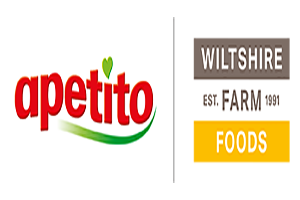Nutrition strategies for patients with sarcopenia
Author: Harriet Smith, Registered Dietitian
Sarcopenia is a progressive and generalised skeletal muscle disorder, characterised by low muscle strength, low muscle quality or quantity, and low physical performance.
Common signs and symptoms of sarcopenia include (1):
● Falls and fractures
● Slow walking speed
● Generalised weakness
● Fatigue
● Weight loss/muscle wasting
● Functional decline
● Cognitive impairment
Sarcopenia which is largely attributable to ageing is known as primary sarcopenia. Sarcopenia is considered ‘secondary’ when other causes (e.g. malignancy or malnutrition) are implicated.
By 60-70 years of age, 5-13% of people have sarcopenia; this rises to 11-50% in people older than 80 years of age (2). The prevalence of sarcopenia is up to 33% in community populations and 10% in acute hospital populations (3).
When treating or preventing sarcopenia, the aim is to minimise skeletal muscle loss and preserve muscle function through a combination of physical activity (which includes resistance exercise) and good nutrition.
Eating enough energy (calories) to maintain a healthy body mass index (BMI) is important for the prevention of malnutrition; a contributing factor in the pathogenesis of sarcopenia (1). Similarly, ensuring an adequate intake of protein is important for preventing and treating sarcopenia and frailty (3).
Below is a list of energy and protein-dense foods  which could be included in an older person’s diet to increase calories and protein:
which could be included in an older person’s diet to increase calories and protein:
● Oily fish (i.e. salmon or mackerel)
● Lean meat and poultry
● Eggs
● Nuts and seeds
● Full fat dairy products (i.e. cheese, milk, yoghurt, custard)
● Dried skimmed milk powder
● Soups fortified with milk powder or milk
● Smoothies made with milk or yoghurt
● Cakes and bars
Vitamin D plays an important role in bone and muscle strength and it may also have a protective role in reducing muscle loss (1). All UK adults, including those at increased risk of vitamin D deficiency, should consume a 10 microgram (400 IU) vitamin D supplement daily from October to March. People with very little or no sunlight exposure should consume 10 micrograms of vitamin D daily throughout the year (4). If a deficiency is detected, higher dosage supplementation may be necessary.
In older adults who are unable to meet their nutritional requirements through an oral diet alone, high-energy, high-protein oral nutrition supplements may be useful. Increasing protein intake by 30g per day has been shown to improve physical performance in frail, community-dwelling older adults (5).
ActaGain 2.4 Complete Maxi is an innovative one-a-day ONS that allows for flexible serving options, especially for patients who struggle with volume or compliance due to reduced appetite.
With 480kcal and 19.2g of protein per 200 ml serving, ActaGain 2.4 Complete Maxi is ideal for many different types of patients who have increased protein and energy needs, such as those with sarcopenia.





